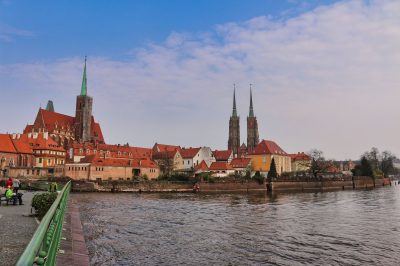After I introduced you to the most beautiful places in Zabrze recently, I headed to Upper Silesia’s Katowice, the largest and most important city in the region, where I want to introduce you to the most beautiful Katowice sights, show you why Katowice bears the title “UNESCO City of Music” and how much the city has changed for the better in the last ten years. But first I want to introduce you to the history of the city.
The history of Katowice
The area around Katowice was settled already in the early times, for the Middle Ages then settlements in today’s district Dąb (German: Domb) are documented. However, the settlements were only of small size. Long controlled by the Habsburgs, Kattowitz, as the city is called in German, then fell to Prussia following the First Silesian War in 1742. This turned out to be a stroke of luck for Prussia, because due to the rich coal deposits the town was to grow from an insignificant village to a veritable town and an important industrial location within a few decades.
In 1865 Kattowitz was granted the status of a city. The development of Kattowitz into an important railroad junction provided a significant boost to the city. Actually, Bytom was planned for this, but the city council there rejected it, presumably because it was composed of many coachmen entrepreneurs who feared competition from the new means of transport. At that time, Kattowitz had only about 15 to 20,000 inhabitants, but this was to change quickly with the settlement of factories and especially mines, and the city was bursting at the seams.
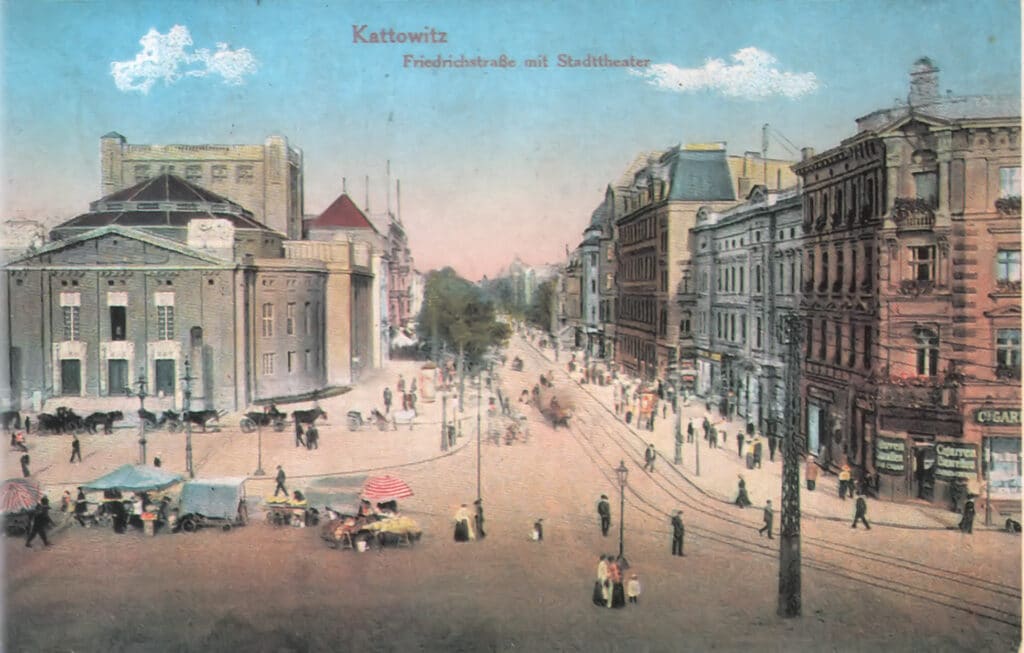
After the First World War, three uprisings and a referendum decided the fate of Silesia. Katowice was annexed to the resurrected Polish state and flourished in the interwar period, being the most important city in what was then Poland’s richest region. If you compare statistics from those years, you can see that significantly more people had water or electricity connections here than in Krakow or Warsaw, for example, and wages were also significantly higher than elsewhere.

Dark years
During World War II Katowice was seized by the Wehrmacht and annexed to the German Reich, persecution and the oppression of Jews and Poles characterized those dark years when over 8000 Jews were deported from Katowice and murdered. After the Red Army took the city, the German population was the victim of persecution and expulsions.
The new communist rulers pushed the settlement of heavy industry and continued to rely on the numerous mines in and around the city, but also initiated a university and made Katowice, as the city has been called ever since, the most important education and research location in the region.
The transition years were then marked by the creeping decline of heavy industry, and Katowice also suffered from smog and other environmental problems.
A city reinvents itself
The year 2010 then marked a turning point in the city’s development. Katowice applied for the title of European Capital of Culture, but was ultimately defeated by Wroclaw. Nevertheless, the application marked the start of a transformation of old industrial wastelands, a revitalization of the city center and the construction of numerous spectacular buildings that catapulted Katowice abruptly into the modern age. Anyone who last visited the city fifteen years ago and is here again today will therefore hardly recognize it due to the numerous new Katowice sights.
Modern science location
What is also particularly striking is how many educational institutions there are here. Several universities are based in the city and ensure that Katowice, which today has around 300,000 inhabitants, has developed into the most important science location in this part of Poland. No wonder the city was awarded the title of European City of Science for 2024. During the Śląski Festiwal Nauki, a science festival, you can also visit a variety of different events once a year.
These are the most beautiful Katowice sights
But enough of the preface, here are the most beautiful Katowice sights! Most of them are located in the center and are easily accessible on foot, only the places further outside you will have to go by streetcar or bus.
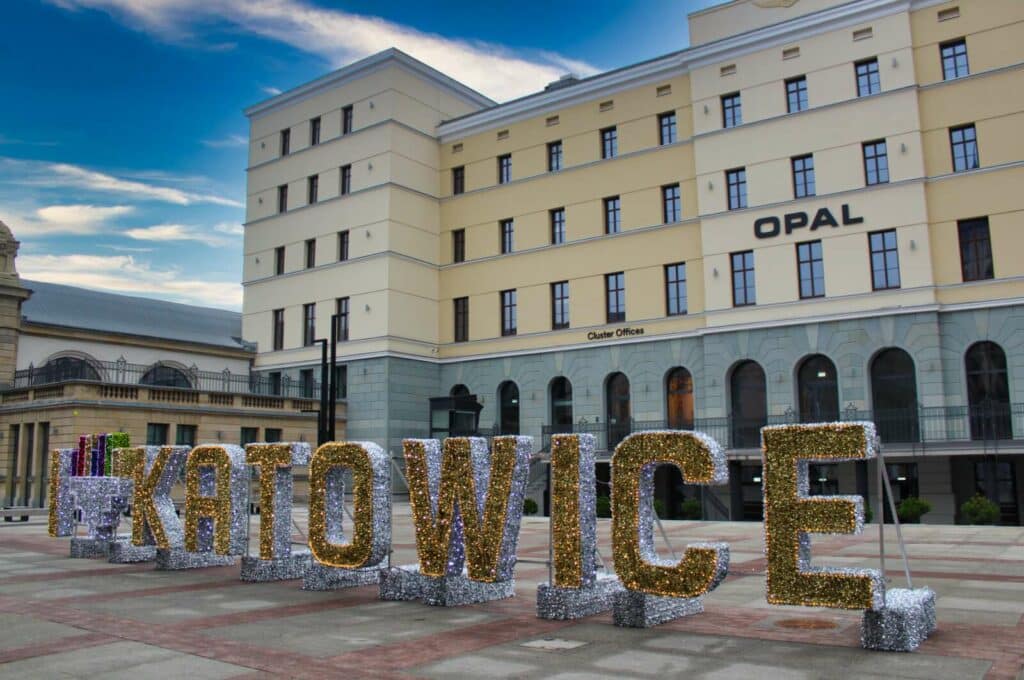
Ulica Dworcowa
One of the most architecturally exciting streets in the city is Ulica Dworcowa, the “Train station street”. Today it is one of the most important meeting points of the city and you will be greeted by a huge “I Love Katowice” sign. There are several buildings here, such as the Old Railway Station, which are currently undergoing extensive restoration. The Hotel Monopol from the early 20th century is also interesting. This is where the famous Polish singer Jan Kiepura once spent his wedding night and spontaneously serenaded the people of Katowice from a balcony.

Ulica Mariacka
From Ulica Dworcowa, Ulica Mariacka (St. Mary’s Street) is just a stone’s throw away. And this is where life bubbles especially in the evenings! Even before the Second World War, several consulates, restaurants and chic boutiques were located here. Later, the creeping decline of Mariacka Street took place. Long neglected, it had a dubious reputation for many years. Today, there is no trace of this. The street, which leads directly to St. Mary’s Church, is full of pubs, bars and restaurants and is the best place to go if you want to experience something in the evening.
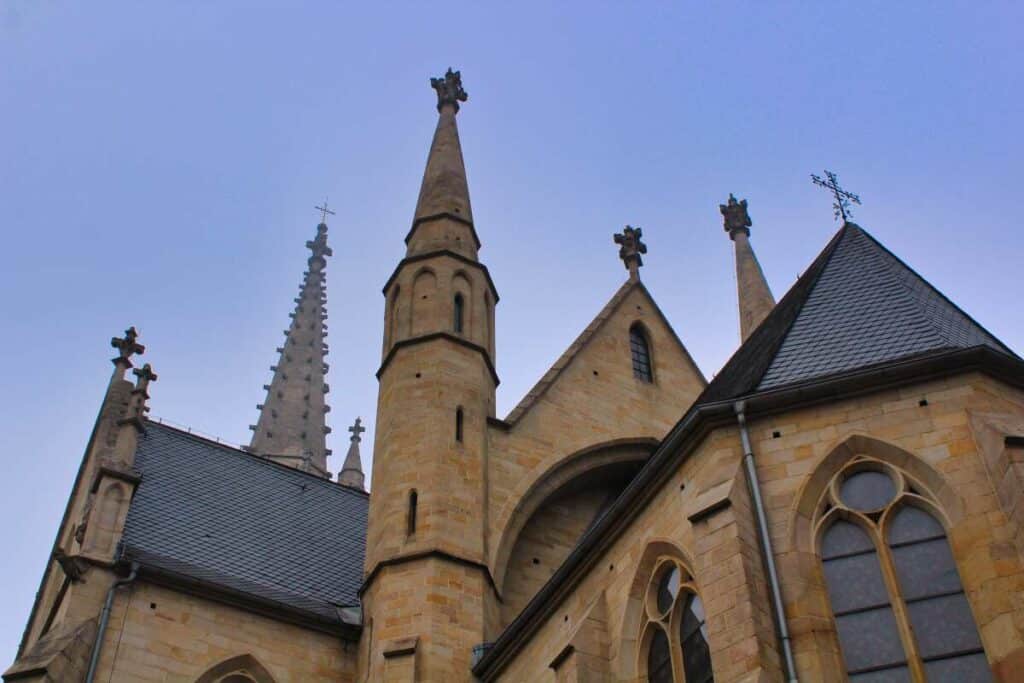

Kościół Mariacki
One of the most beautiful sacral buildings in the city and the most interesting Katowice sights in general is the Church of St. Mary. It is immediately noticeable that its neo-Gothic design is quite different from most other Polish churches in the south of the country. The Silesian master builder Alexis Langer, who was unmistakably inspired by the Cologne Cathedral, was responsible for the construction. Inaugurated in 1862, St. Mary’s Church was the first ever Catholic church in Katowice.
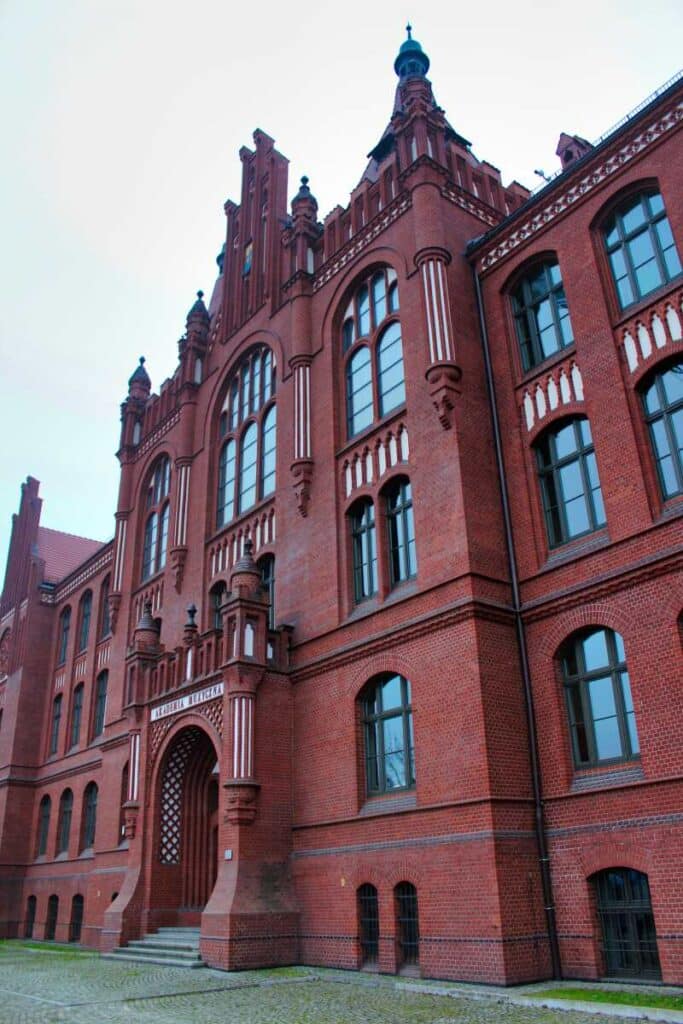
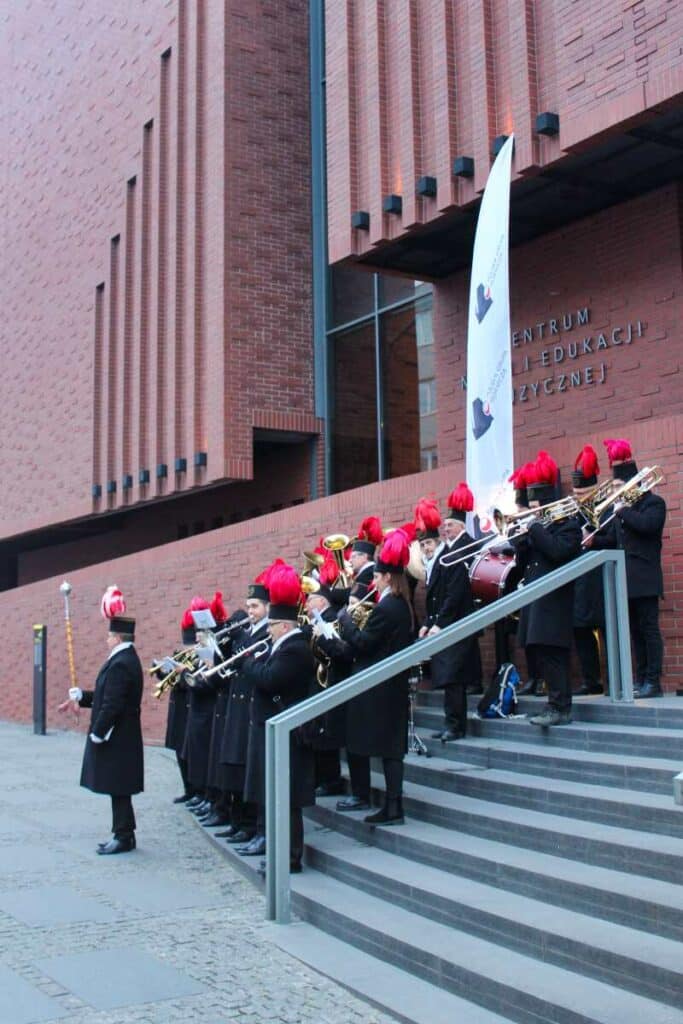
Music Academy
Another important neo-Gothic building is the building of today’s Academy of Music in Zacisze Street. Inaugurated in 1898, it was the seat of the Silesian Parliament (Sejm) during the short period of the Autonomous Voivodeship of Silesia after World War I, and later music entered the magnificent building. In 2008, a modern extension was added, which corresponds well with the historical part of the building and also includes a concert hall. Today, the Academy of Music is one of the best in the country and for a long time Katowice was the only place in Poland where jazz could be studied. For decades, jazz musicians from Poland have enjoyed an excellent reputation and are among the best non-American representatives of the genre.
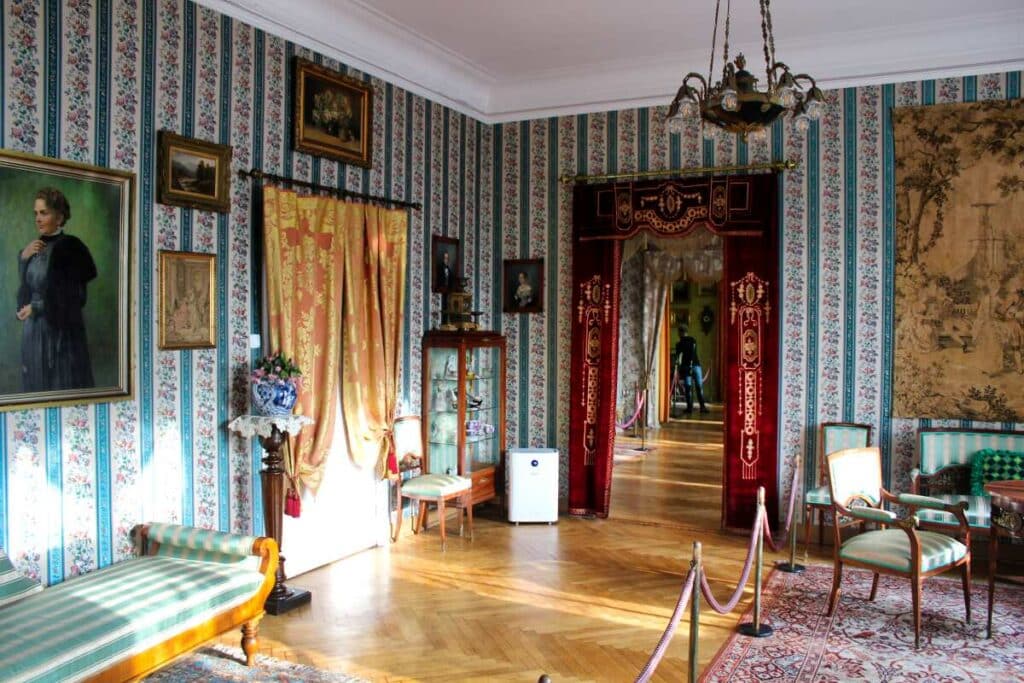
Museum of the citys history
The Muzeum Historii Katowic is entirely dedicated to the eventful history of Katowice. It is located not far from the Academy of Music in a historic building and is divided into three parts, each of which occupies an entire floor of the spacious residential building. On the second floor, thanks to two wonderfully prepared apartments, you gain insight into the living conditions in the city in the period before the Second World War, with one apartment adapted to upper middle-class conditions and the other to lower middle-class conditions. Everything is so wonderfully and realistically prepared that you could almost think that the residents had only stepped out for a moment and could return at any moment.
One floor up, changing exhibitions are shown. On the third floor, you can immerse yourself in the city’s history. The focus here is on the history of industrialization and everyday life in the city.
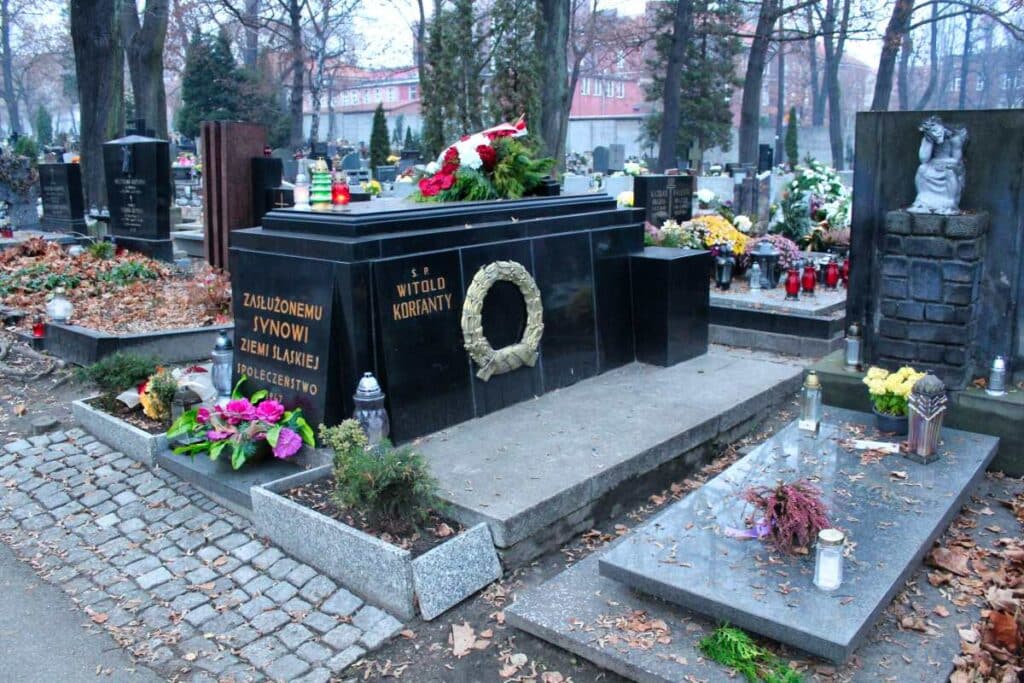
Cemetery at Francuska Street
The most beautiful cemetery in the city is located in the very center and can be described in full conscience as a kind of pantheon of famous Silesians. It has a Protestant and a Catholic part and beautiful gravesites, some of which date back to the early days of burial in the 1870s. Although the cemetery is not the largest in the city, it is certainly the most beautiful and significant and therefore one of the most atmospheric Katowice sights.
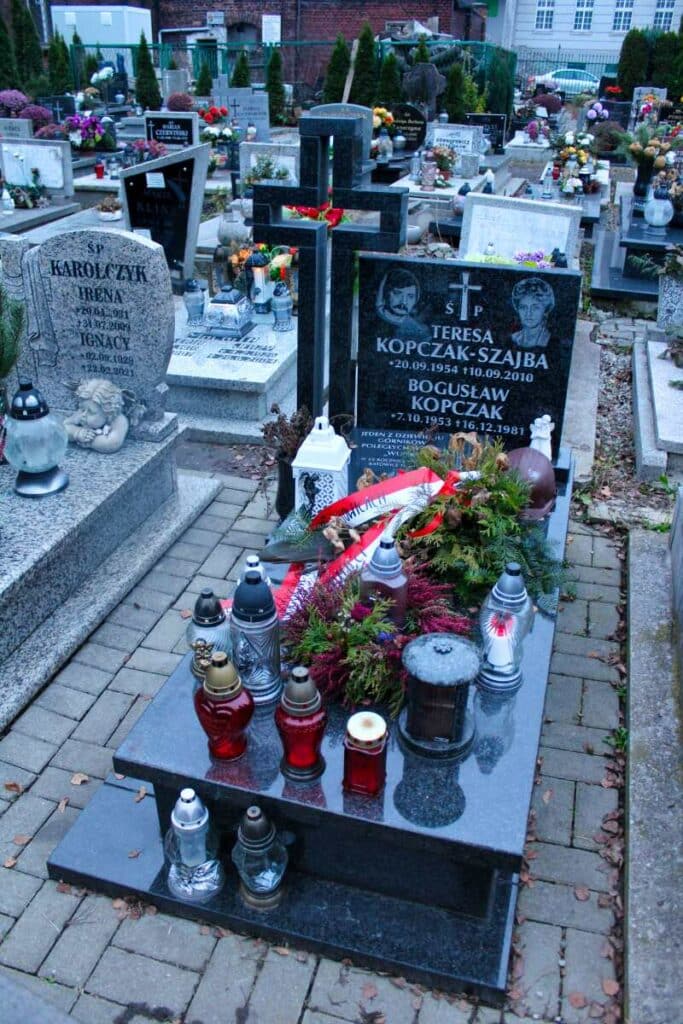
Diverse graves
The cemetery also contains the grave of Wojciech Korfanty. The politician championed Polish interests in Upper Silesia, participated in the Silesian uprisings and held the office of Prime Minister for a time. Furthermore, miners who died during the storming of the “Wujek” mine are buried here. In 1981 there was a strike among the miners here in the Katowice complex, which was brutally put down by the communist authorities. Nine people lost their lives and the brave miners are still remembered in many places in Poland.
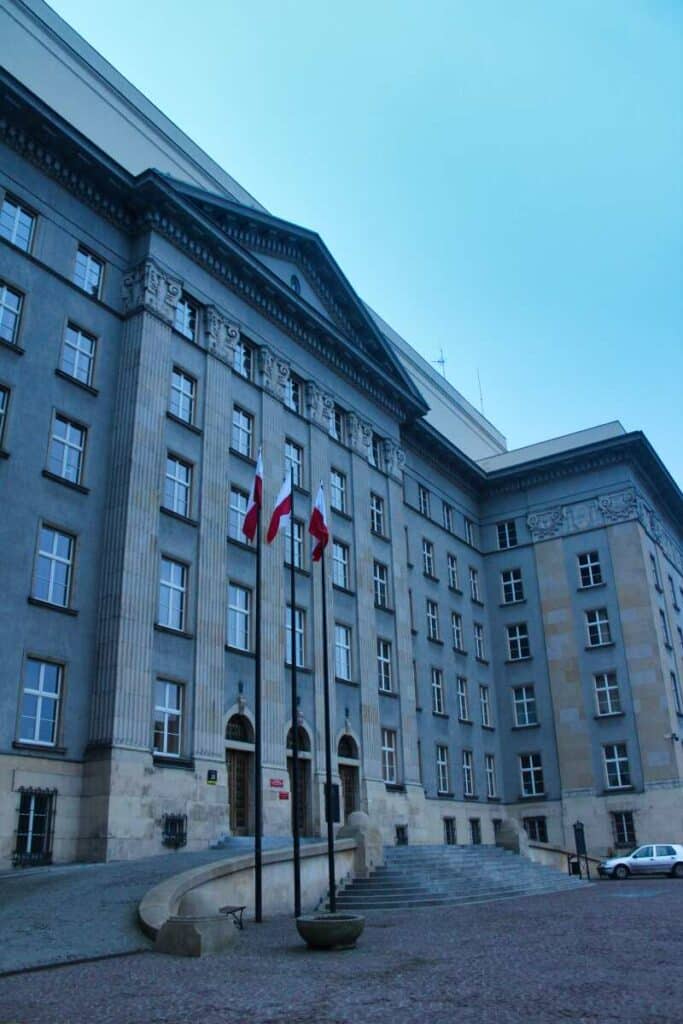
Sejm Śląski
On Jagiellonska Street, a real colossus then awaited me during my walk through Katowice, the building of the Silesian Parliament. Built between 1925 and 1929, it was the largest administrative building in Poland during the interwar period. With its magnificent facade, it is still very impressive today. However, this building also harbors a dark history, because during the German occupation in World War II, the newly created Gau Oberschlesien had its headquarters here. Today, the building is shared by the Marshal’s Office and the Voivodeship Office.
Cathedral of Christ the King
Be honest: Would you have known that Poland’s largest cathedral is not in Warsaw or Krakow, but in Katowice? I, at least, was quite surprised when I heard that. The church was built between 1932 and 1955 and thus only in communist times and against some resistance of the then rulers (who could then at least enforce that the party building was still a bit higher). With a height of over 60 meters and a length of over 100 meters, the church makes quite an impression.
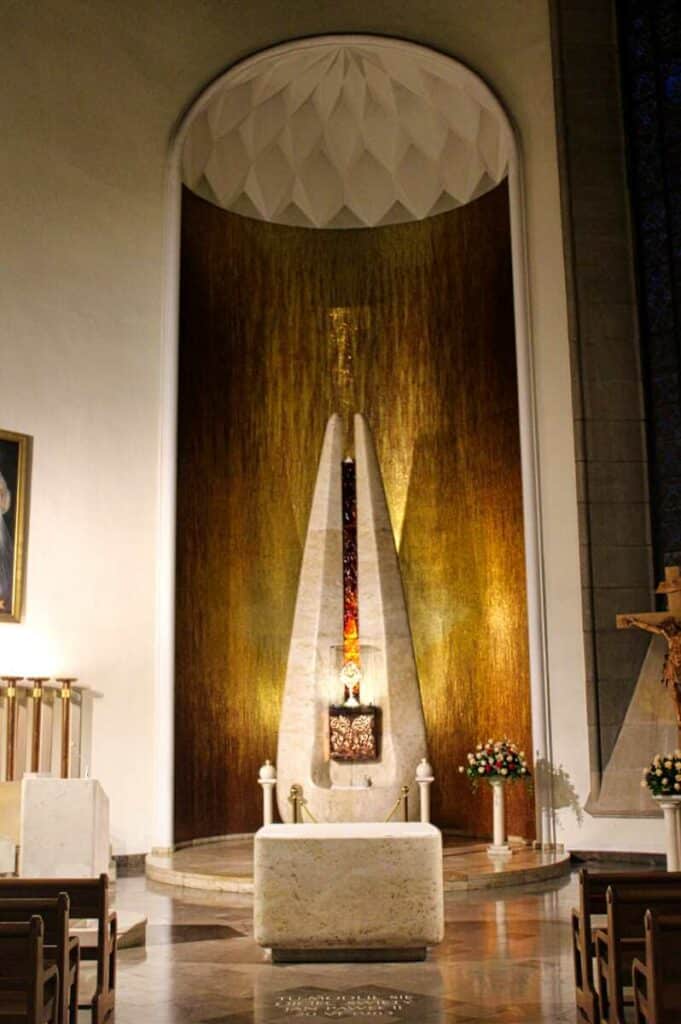
Exciting details inside
The sacral building offers space for 6000 believers and even today many masses are well attended. Two side chapels are particularly impressive. One is dedicated to St. Barbara, the patron saint of miners. Here is an altar made entirely of coal. The Holy Spirit Chapel opposite, with its golden mosaic consisting of over 1 million small stones, was donated by Joseph Ratzinger, later Pope Benedict XVI, who was so impressed by the building during a visit to the church that he wanted to immortalize himself here.
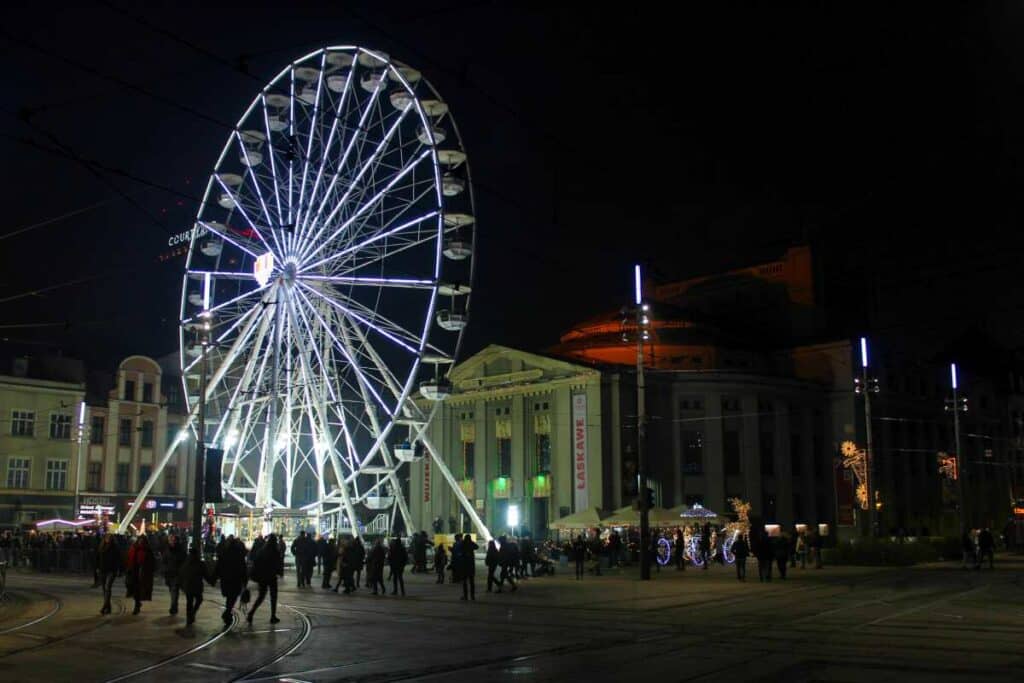
Market Square
Normally, the market square, the Rynek, is the most important place for people to go out at night in Polish cities. In Katowice it is a bit different, after all the city is very young, has not developed from a marketplace and is therefore much more decentralized.
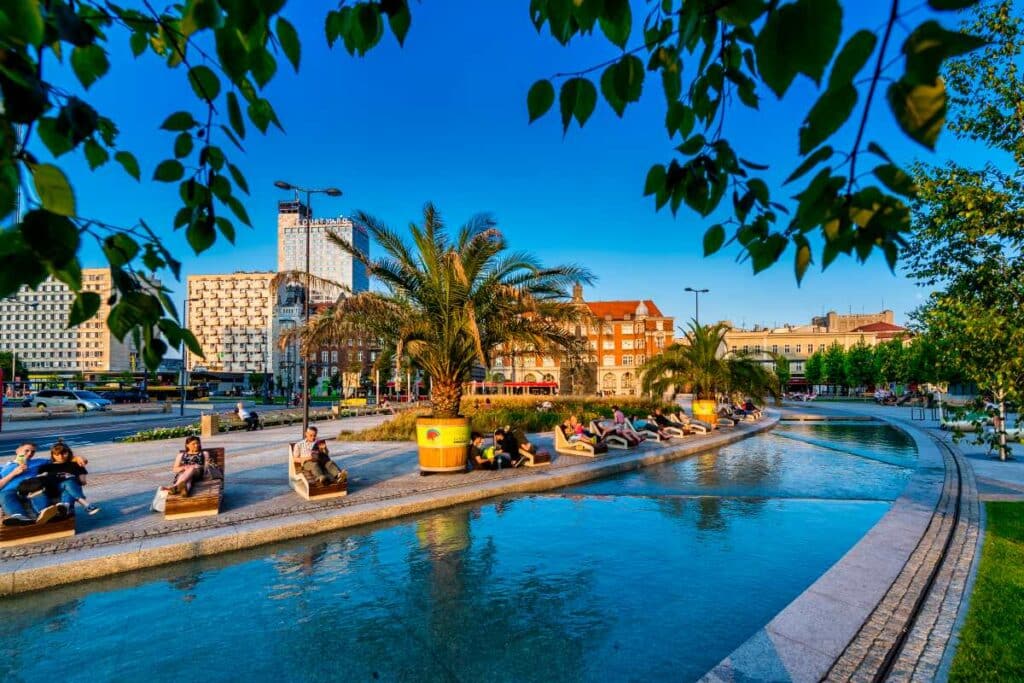
Nevertheless, a visit to the marketplace is definitely worthwhile. Today it is composed of three parts: an area with beautiful flowerbeds, a central area where events such as a nice Christmas market are always held, and a part dominated by the Silesian Theater. Interesting detail: In a side street, ul. Młynska, Maria Goeppert-Mayer was born. The scientist was the second woman to receive the Nobel Prize in Physics in 1963.

Culture Zone (Strefa Kultury)
Now it’s time to head to the most modern part of the city. Where once coal was mined in the Katowice colliery, an ultramodern area has developed with numerous attractions that you should take at least half a day to visit. At first, you don’t know where to look first: Skyscrapers, old winding towers and then this UFO …
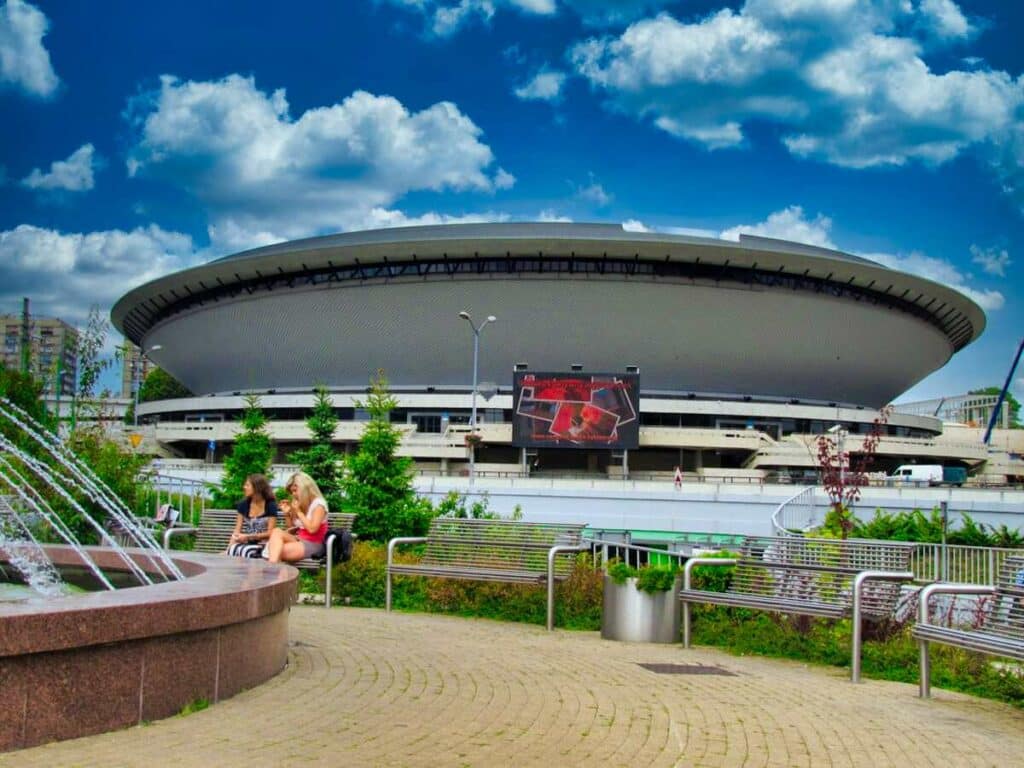
Spodek
Yes, you read correctly, an UFO has landed in Katowice. At least that’s what many people call the building. The multipurpose hall is one of the outstanding examples of socialist architecture and was inaugurated back in 1971. With a maximum capacity of 11,500 spectators, the hall is one of the largest venues in the region. In 2023, things will get exciting when the German national handball team plays its group matches here during the World Cup. Today, the Spodek is not only the city’s most important landmark, but has even been given a neighbor, the International Congress Center. This spectacular building with a green roof is connected to the Spodek underground and offers many more seats, so that the total capacity can be increased to up to 25,000 for events.
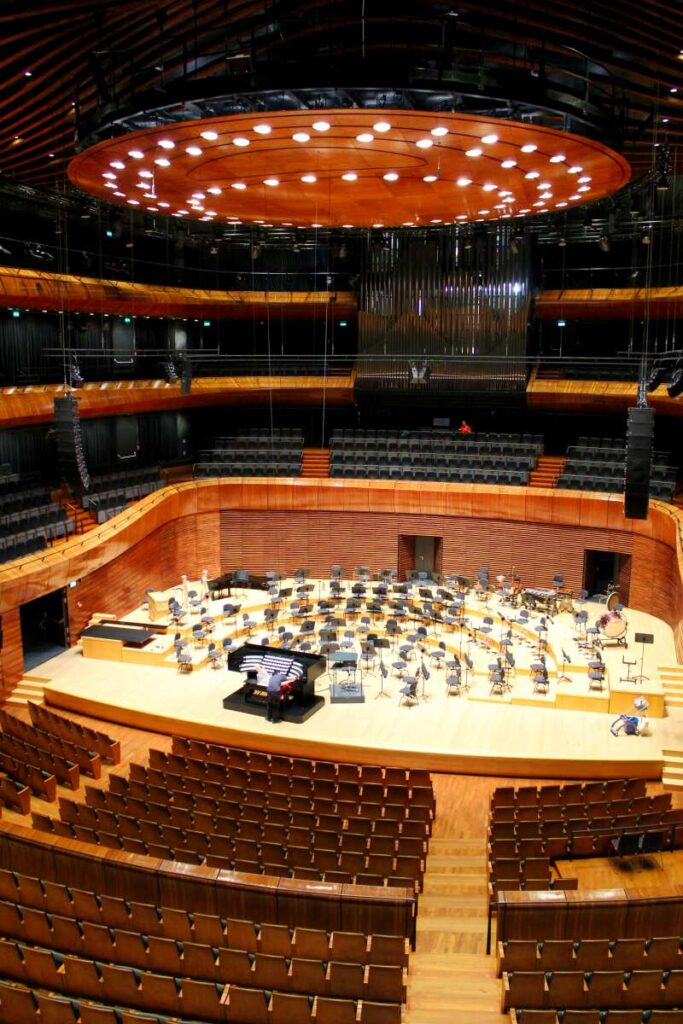
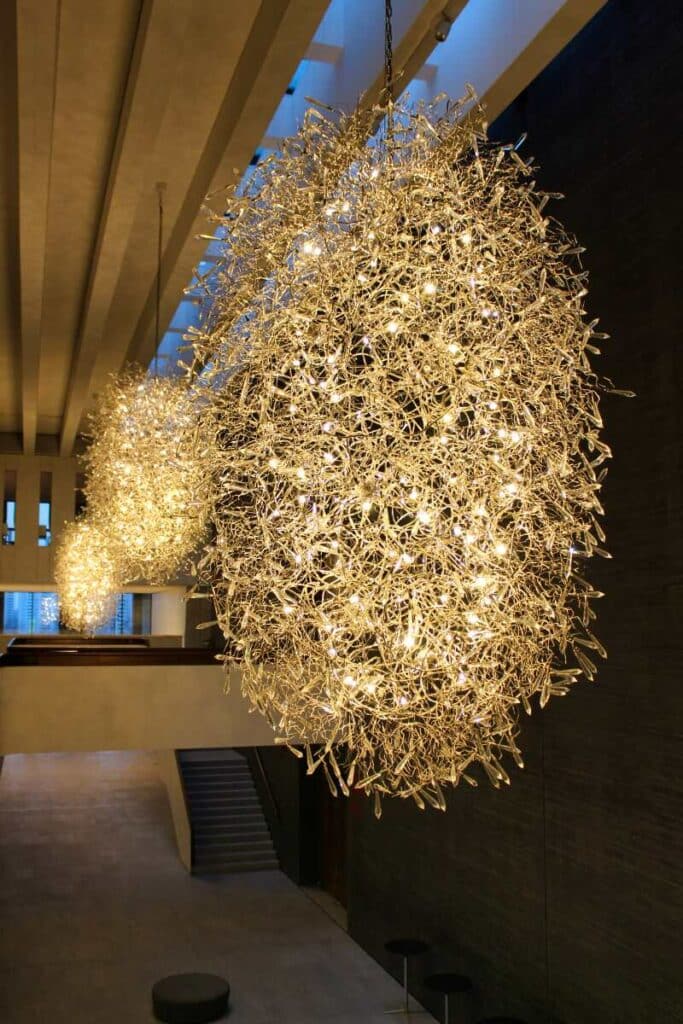
NOSPR
Behind the cryptic name NOSPR hides one of the newest and most spectacular Katowice attractions, the approximately 1,800-seat venue of the National Symphony Orchestra of Polish Radio, designed by Tomasz Konior. Opened in 2014, one of the most modern concert halls in Europe awaits you here and entering the Great Hall will take your breath away! Inspired by the Nikiszowiec workers’ settlement (see below), the building has become a worthy venue for the UNESCO City of Music and a useful addition to Katowice’s already wide range of performance spaces.
A 134 meter high matchbox
From here, by the way, you also have an excellent view of the KTW II building, which is reminiscent of matchboxes. It is a spectacular 134-meter skyscraper that is so nested that it almost looks as if it could fall apart at any moment.

Muzeum Śląskie (Silesian Museum)
One of the newest parts of the cultural zone is the Silesian Museum. From the outside, you can’t tell what treasures are hidden here. Embedded in partly restored, partly dilapidated remains of the Katowice mine (by the way, there is also a chic tower here that has been converted into a lookout point), the glass cubes seem somewhat modest. But that’s intentional, because like the miners once did, you first have to go underground here to get to the museum’s treasures.


Art, religion and history
The exhibition includes three parts. Firstly, Polish art from 1800 to the present is shown here. Besides masters such as Matejko or Wyspiański, you will also find controversial modern works and many works by Silesian artists. Another part is dedicated to the Silesian sacral art. In addition to liturgical objects, you will also find old altars, statues and numerous paintings. The historical part of the exhibition is also exciting, dedicated to the history of Upper Silesia from its early beginnings to the present day. Here you will learn a lot about the eventful history of the region, everything is set up very vividly and especially the sections on the referendum and the Silesian Uprisings as well as the history of Silesia during socialism are impressive. In addition, temporary exhibitions are also shown in the building.
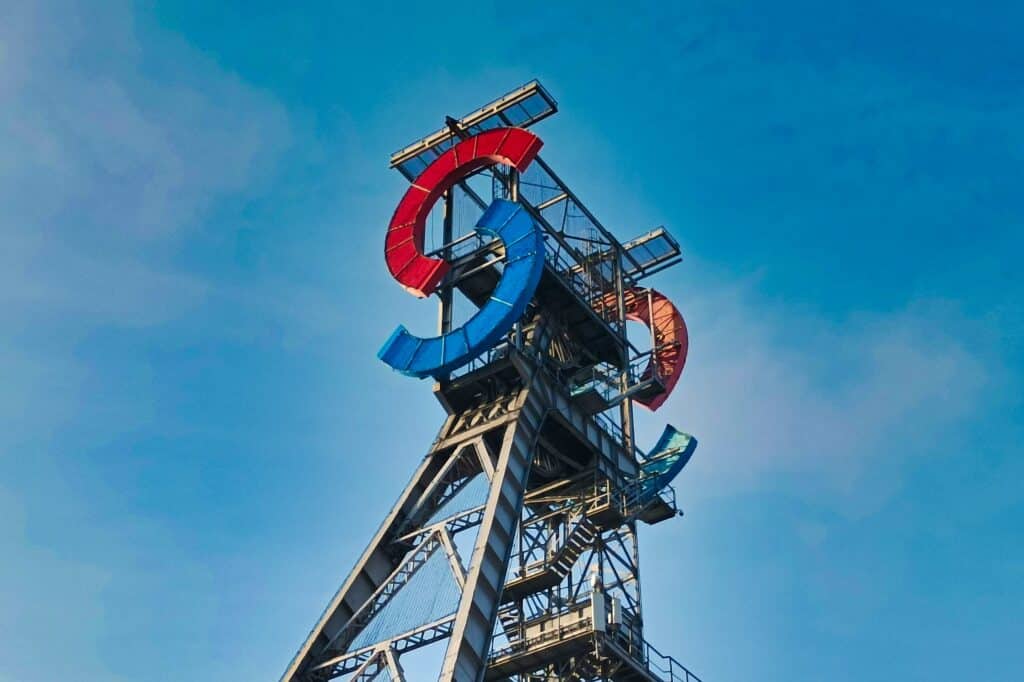
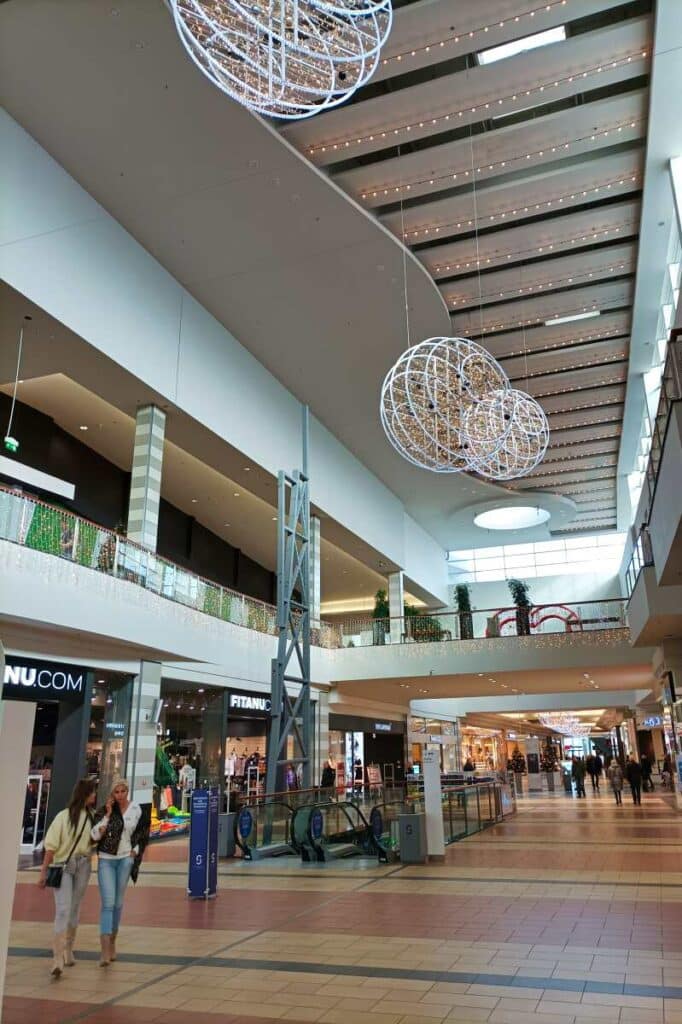
Silesia City Center
To the west of the cultural zone is the city’s most impressive shopping complex. On the site of several coal mines, a shopping center of superlatives was built here, which is said to have cost a whopping 600 million euros. On more than 80,000 square meters, there is nothing here that is not available and a visit is recommended not only for shopping, but also from a culinary point of view. During construction, the historical heritage of the area was carefully taken into account, even an old winding tower still stands here!

Giszowiec
The nearest of Katowice sights is already outside the center. Gieschewald, as it was called during German times, was a workers’ settlement created at the beginning of the 20th century and was the first garden city in Europe. 400 small cottages were built here to provide homes for over 2000 miners and their families. The cute houses were deliberately designed as if they could also be found in the countryside. And there is a reason for that: the miners were mostly from rural areas and were supposed to feel as comfortable as possible here. Unfortunately, many houses were later demolished to make way for prefabricated buildings, but around a quarter of the original building fabric has survived to this day.
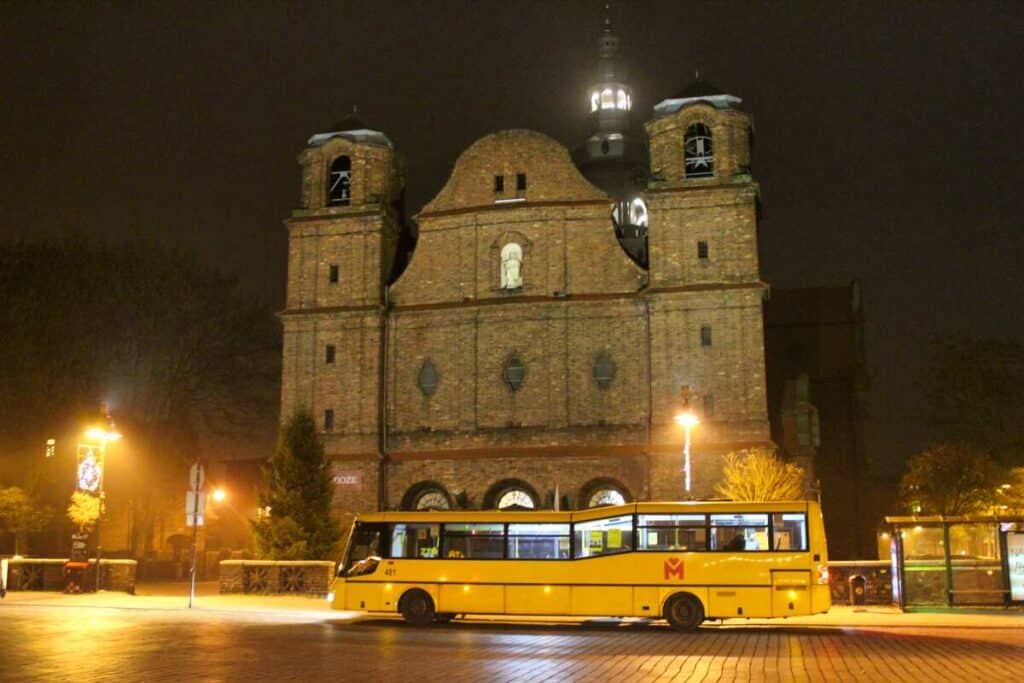
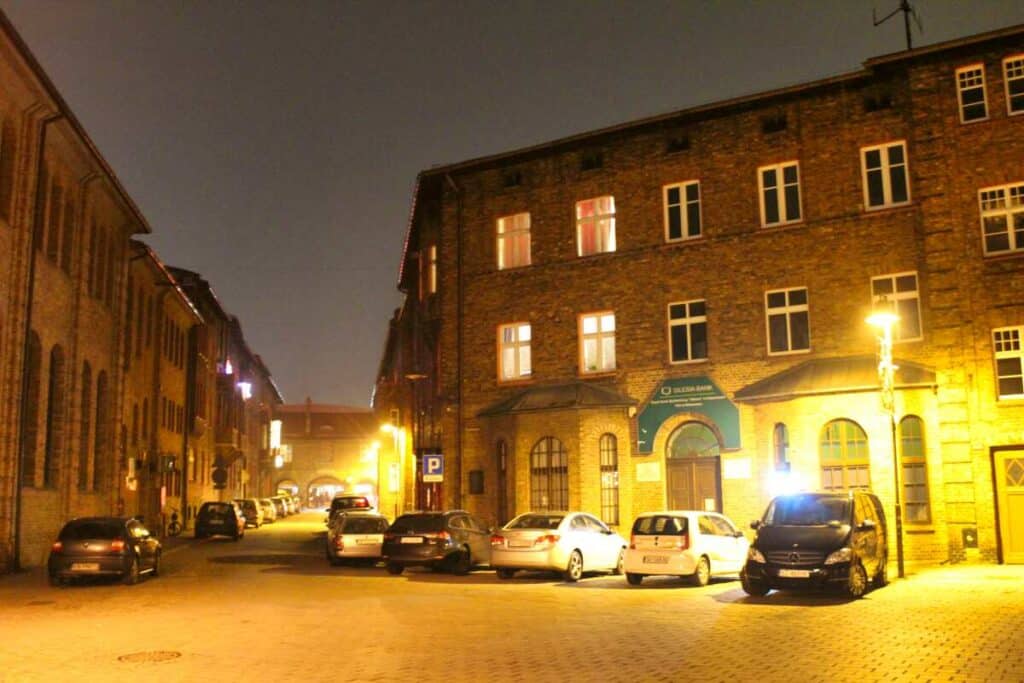
Nikiszowiec
At the same time as Giszowiec, the Nickischschacht (Polish: Nikiszowiec) settlement was built, one of the most exciting Katowice sights. Emil and Georg Zillmann, two architects from Charlottenburg (Berlin), were responsible for the spectacular brick settlement for the workers of the Giesche mine and created a microcosm comprising nine building complexes, each grouped around an inner courtyard. Even today, the complex is one of the most popular residential quarters in the city.
A church for the miners
Nothing was lacking here, even a large church was built. The Anna Church, like the rest of the settlement, is made of brick and can accommodate up to 3500 believers. The neo-baroque building has a wonderful main altar made in Munich, windows from Regensburg and organs from Krnov.
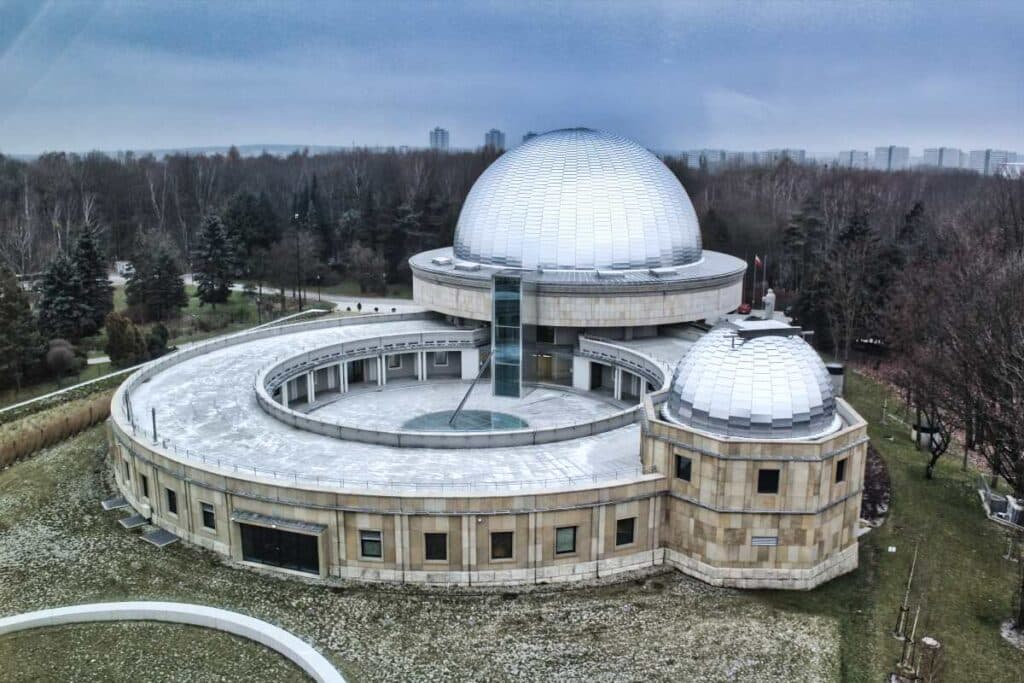
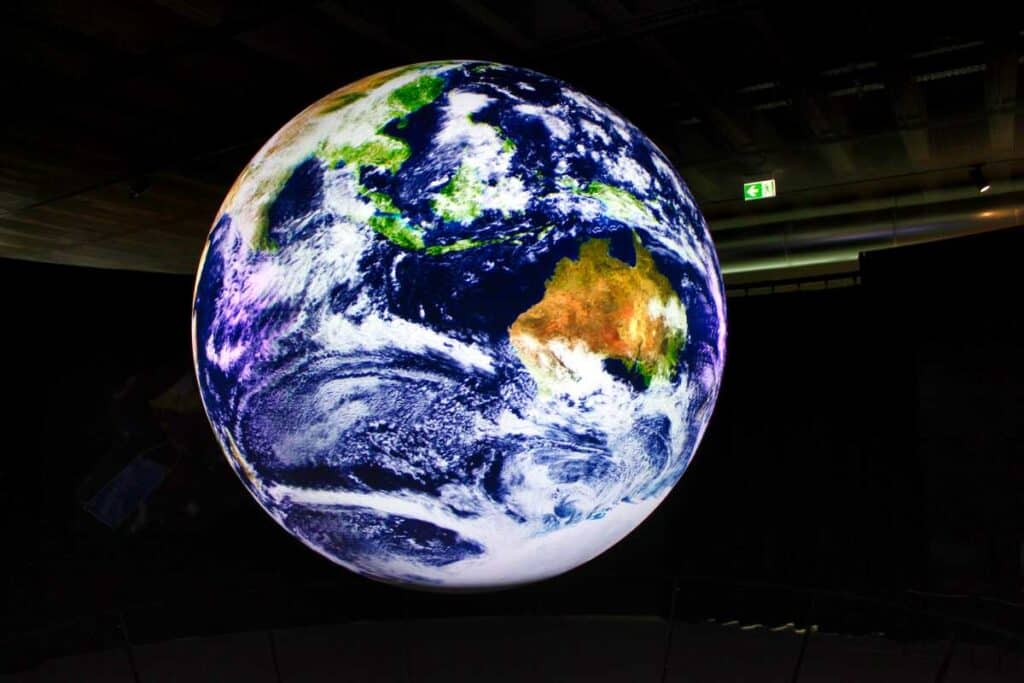
Planetarium
Admittedly, the planetarium is actually no longer in Katowice, but already in Chorzów (former Königshütte). But you won’t notice that, because like in the Ruhr area in Western Germany, all the cities in the region have grown into each other and city boundaries are hardly discernible. The first planetarium was opened here in 1955, which makes it the oldest planetarium in the country (and also the largest in Poland).
Recently, a modern, partially underground area was added to the facility. 1 million stars can be shown here, but there are also films on scientific topics to admire. From the attached observation tower, you have a great view of the adjacent Śląski Park, where countless attractions such as a small amusement park and many beautiful green spaces await you. But we especially liked the exhibition of the planetarium. It is dedicated to astronomy and geophysics and you can fly into space with a simulator, experience an earthquake or see how lightning is created!
Food and Drinks
You got hungry and thirsty after visiting the many Katowice sights? No problem, here are my tips for a perfect evening in the city. And if you are interested in the delicious Silesian cuisine, then we recommend you to take a look at this page, where you will find information about the Silesian cuisine in all its facets.
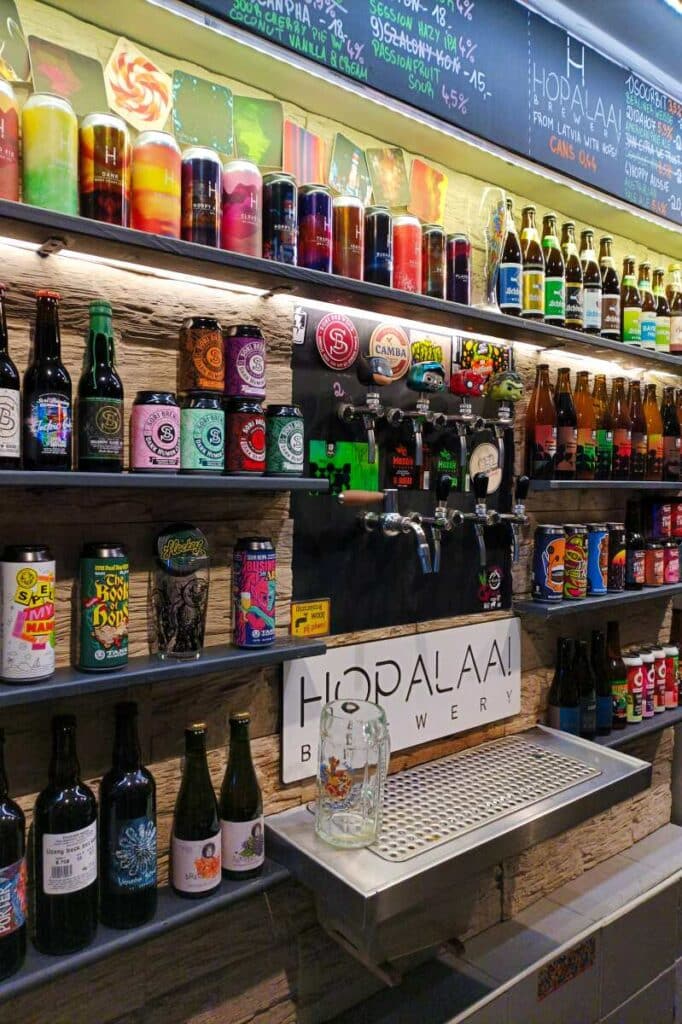
- Browariat, ul. Francuska 11. Browariat may be small, but the selection in the craft beer bar is still huge! Friendly bartender Kuba knows his stuff and if you’ve ever wanted to try Latvian or Estonian craft beer or a wheat from a brewery from Germany that no one even in our country knows about, then this is the place for you!
- Browar Mariacki, ul. Mariacka 15. In the middle of the nightlife district Mariacka Street, various tasty beers are brewed and delicious international cuisine is served, especially meat fans will get their money’s worth here. In the morning, a delicious breakfast is also served (even without beer).
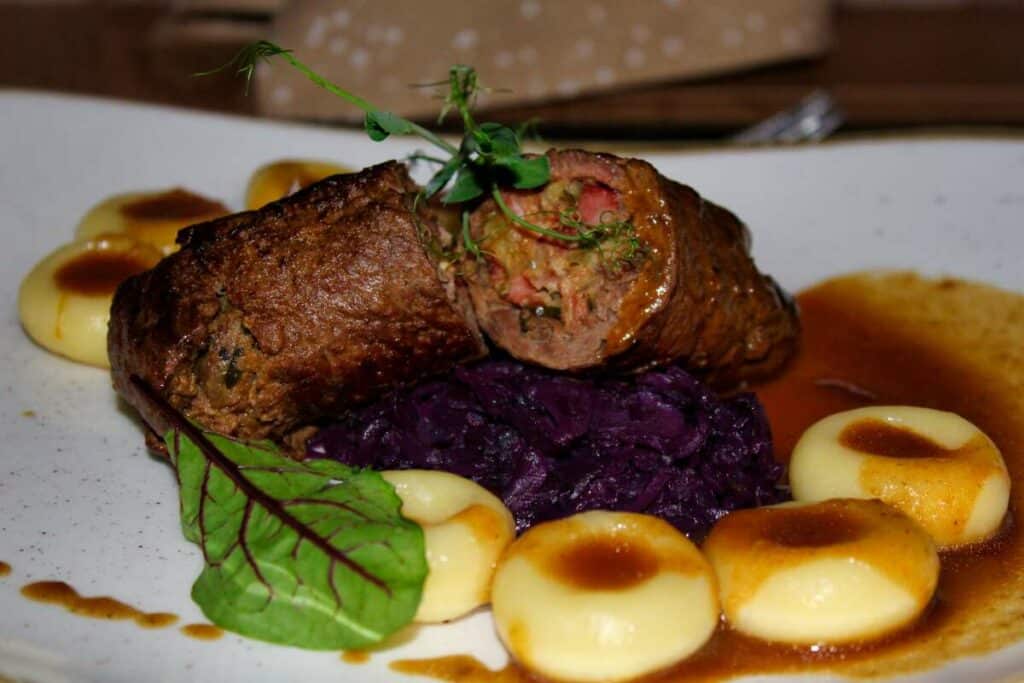
- Kaktusy, ul. Dworcowa 11. I’ll be honest: I was thrilled by this place. I ate here twice and had perhaps the best roulade of my life, a typical Silesian dish. The ambience is also absolutely convincing and presents itself chic and modern.
Overnight stay
- Q Hotel Plus, ul. Wojewódzka 12. Located in the center (and thus great for exploring Katowice’s sights), this hotel impresses with clean rooms, friendly service, a great breakfast buffet, and an excellent restaurant serving many delicious Silesian dishes.
How did you like the visit to Katowice? Which is for you the most beautiful of Katowice sights? Let us know and write a comment.
Note: The cover image is from UM Katowice.com.tv. We thank for the kind reprint permission for the external images.



